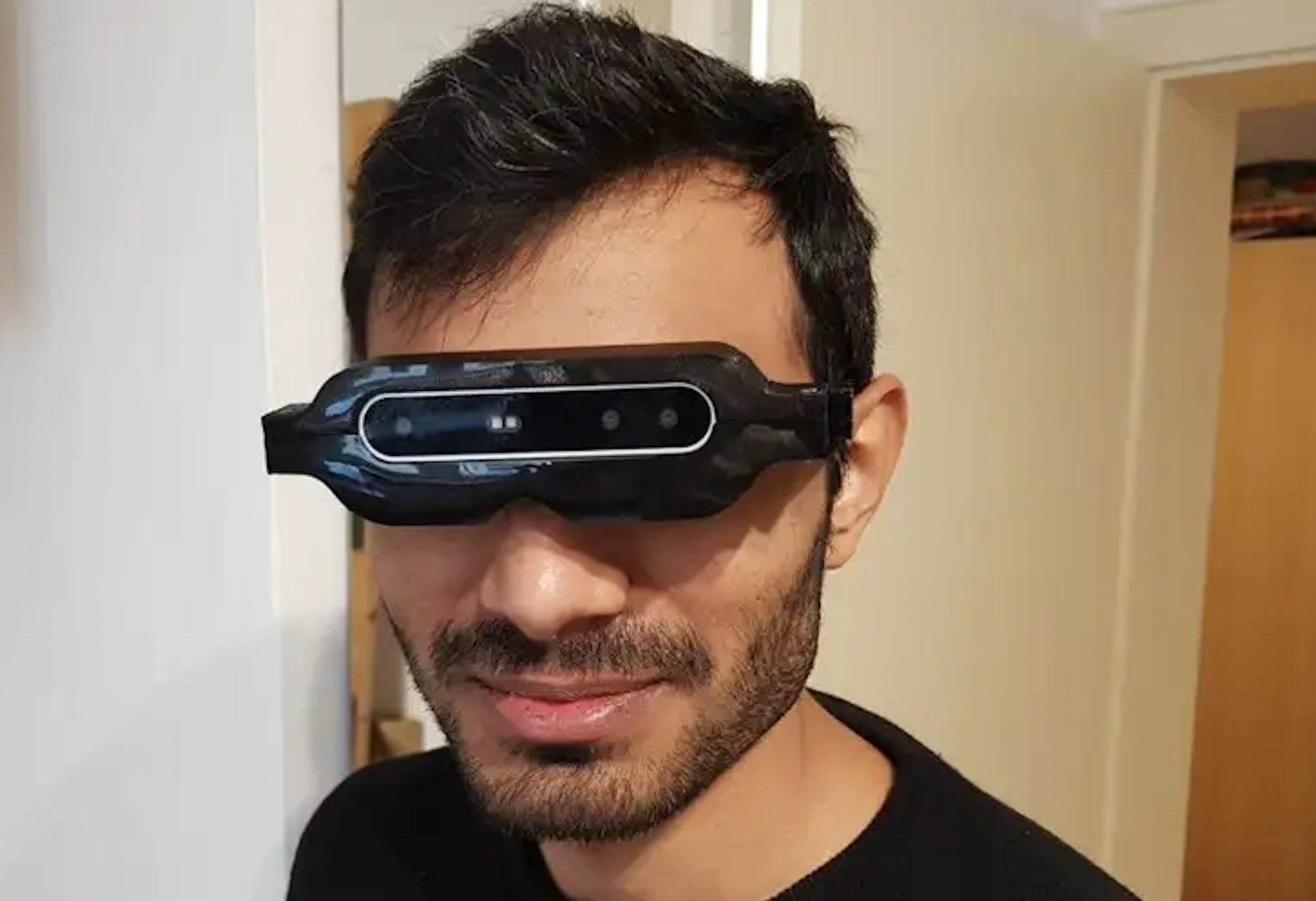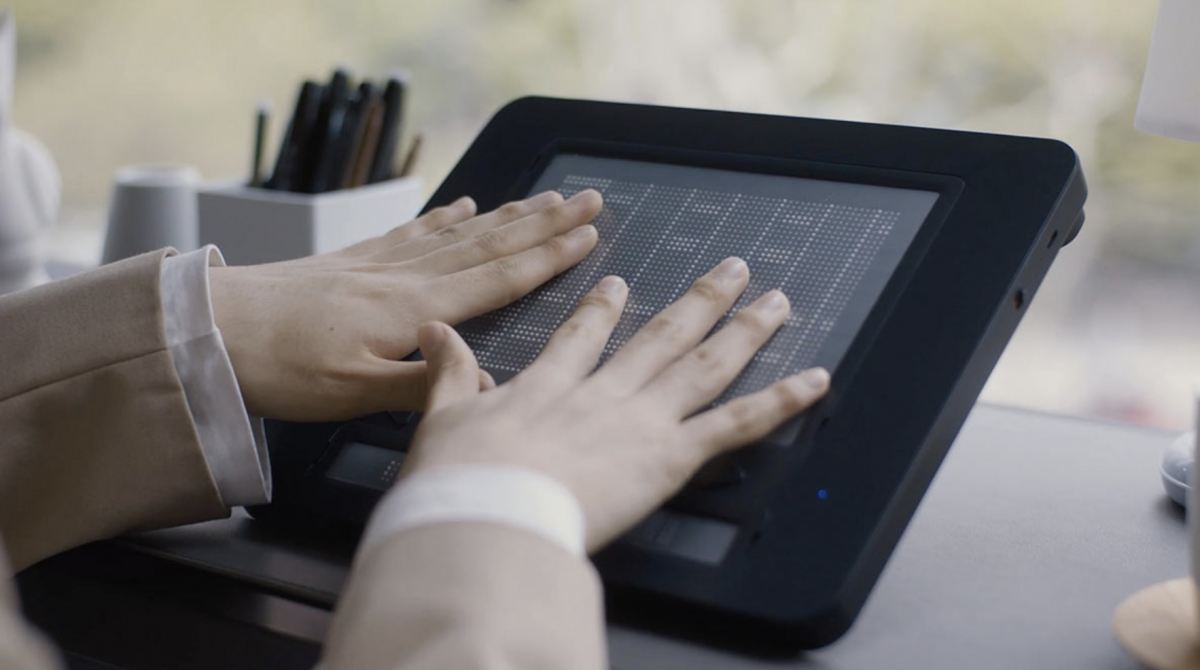AI-Powered Visual Aids: Enhancing Autonomy for Blind Users
Discover Cutting-edge Tools Developed for the Visually Impaired
The growth of cutting-edge devices for the visually damaged stands for a substantial improvement in accessibility and freedom. Technologies such as smart glasses with AI abilities and mobile applications made to offer acoustic summaries are reshaping everyday experiences for customers.
Smart Glasses for Navigation

Smart glasses developed for navigating are changing the method aesthetically damaged individuals connect with their atmosphere. These advanced gadgets make use of a mix of video camera innovation, expert system, and acoustic comments to give real-time information concerning surroundings. By utilizing challenge detection systems, clever glasses can inform customers to possible hazards, enabling more secure movement in both strange and familiar settings.
The integration of GPS innovation better boosts navigating capacities, permitting users to get acoustic directions as they move. This hands-free method not only fosters freedom but likewise encourages aesthetically damaged individuals to navigate urban landscapes with increased confidence. In addition, many wise glasses are outfitted with features that identify sites and road signs, supplying contextual details that enhances the individual experience.
In addition, the development of these gadgets is continuously progressing, with firms working to enhance the precision of object acknowledgment and expand the array of navigational features. As wise glasses come to be extra affordable and easily accessible, they hold the prospective to dramatically transform daily life for visually impaired users. Inevitably, these cutting-edge tools represent a vital step toward inclusivity, offering improved wheelchair and a higher sense of freedom for individuals navigating the globe around them.

Mobile Apps for Daily Living
Exactly how can mobile applications enhance the lives of aesthetically impaired people? Mobile apps are changing the way visually impaired individuals navigate their environments, take care of everyday tasks, and gain access to information. These applications offer vital support via different functionalities, promoting self-reliance and improving lifestyle.
A number of innovative mobile applications are made specifically for daily living. For example, apps like Be My Eyes attach aesthetically impaired users with sighted volunteers by means of video clip phone calls, permitting them to receive real-time assistance with jobs such as checking out labels or navigating unfamiliar areas. Seeing AI, created by Microsoft, utilizes artificial intelligence to explain environments, read text, and determine objects, properly transforming a smart device into a powerful tool for everyday aid.
Additionally, navigating apps customized for the visually damaged, such as Aira and BlindSquare, offer audio-based directions and environmental details, allowing customers to traverse their environments safely and with confidence. Past navigation and instant support, mobile apps likewise sustain organization and job monitoring, with attributes that help users set reminders, develop to-do lists, and track visits. In recap, mobile applications serve as vital sources, encouraging visually impaired individuals to lead even more independent and fulfilling lives.
Wearable Technologies for Support
Empowerment through modern technology is increasingly apparent in the realm of wearable gadgets created to aid aesthetically damaged individuals. These innovative tools integrate seamlessly into life, improving navigating and giving vital responses to users. Smart glasses equipped with video cameras can acknowledge faces and review message out loud, permitting users to interact more confidently in social and professional setups.
An additional noteworthy development is the use of haptic comments systems in wearable gadgets. These systems use vibrations or various other responsive signals to share details concerning the customer's setting, such as barriers or adjustments in terrain, improving mobility and safety. Wearable technologies also consist of wristbands that connect to smart devices, alerting users to notifications via refined vibrations, therefore enhancing connection without dependence on visual cues.
As these innovations continue to develop, they are not only boosting self-reliance for aesthetically impaired individuals but additionally cultivating a greater sense of inclusion in culture. By connecting the gap in between obstacles dealt with in daily living and the capacity for freedom, wearable technologies serve as crucial devices in the mission for equal rights and empowerment for those with aesthetic disabilities.
Sound Summary Devices
Sound description tools play a critical role in boosting availability for visually damaged individuals, giving them with the capacity to engage with aesthetic media. Wearable technology for low vision. These devices provide narrated summaries of essential aesthetic elements in films, tv shows, and live efficiencies, ensuring that individuals can totally comprehend the context and feelings shared with visuals
Sound summary can be integrated eye care associates right into numerous platforms, consisting of streaming services, cinema testings, and live cinema. Numerous preferred streaming solutions currently pop over to these guys include audio summary as an access feature, enabling visitors to choose it conveniently. Along with traditional media, specialized applications likewise exist, supplying audio summaries for art events, galleries, and other social occasions.
The efficiency of audio summary rests on the ability of the storytellers, who have to convey aesthetic details succinctly without interfering with the original audio. Advancements in this area are additionally leading the means for even more personalized experiences, where customers can change the degree of information and pacing according to their preferences.
Braille Innovations and Instruments
Braille tools and innovations have considerably transformed the method visually impaired individuals engage with message and details. Modern innovations have actually led to the growth of versatile tools that enhance proficiency and freedom among individuals.
Furthermore, portable Braille notetakers integrate conventional Braille input with contemporary functionalities, facilitating note-taking, organizing, and paper modifying on the go. Braille displays and notetakers. These small devices often feature text-to-speech abilities, connecting the gap in between Braille and acoustic info
Additionally, innovative Braille printers have actually emerged, allowing customers to create Braille labels, documents, and instructional materials efficiently. This accessibility fosters better involvement in educational and specialist environments, inevitably promoting inclusivity.
Furthermore, study right into smart Braille innovations remains to broaden. Devices that integrate fabricated knowledge are being discovered to supply real-time navigation help and contextual info, boosting the individual experience in varied settings. In general, these innovations show a dedication to equipping aesthetically impaired individuals via technology, ensuring they can easily gain access to and engage with the globe around them.

Verdict
The innovation of cutting-edge tools for the visually impaired significantly boosts freedom and high quality official site of life. Smart glasses, mobile applications, wearable innovations, audio description tools, and Braille technologies collectively empower people by giving necessary navigation help, environmental recognition, and enhanced reading experiences. These modern technologies not only foster greater incorporation however likewise promote freedom in daily tasks, inevitably adding to an extra easily accessible and equitable culture for visually impaired people. Continued advancement in this field holds pledge for further enhancements.
As clever glasses become a lot more available and inexpensive, they hold the prospective to substantially change day-to-day life for aesthetically damaged users. Mobile apps are reinventing the means aesthetically damaged users navigate their atmospheres, handle everyday jobs, and accessibility details. Applications like Be My Eyes attach visually impaired individuals with sighted volunteers by means of video calls, permitting them to receive real-time support with tasks such as checking out labels or navigating unknown areas.Furthermore, navigation apps tailored for the visually impaired, such as Aira and BlindSquare, offer audio-based directions and environmental information, enabling customers to traverse their environments securely and with confidence.The advancement of cutting-edge devices for the aesthetically damaged substantially improves independence and quality of life.